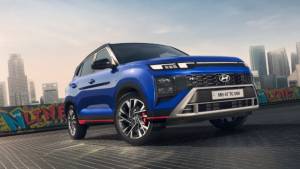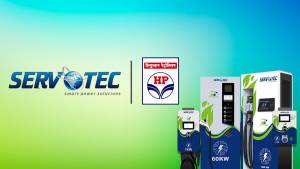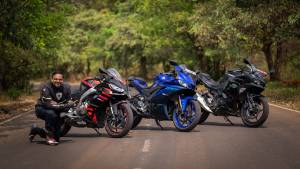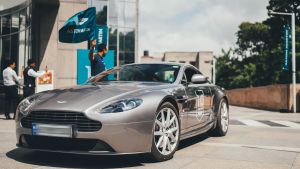Escargot it aint!
Harriet Ridley
Updated: July 25, 2013, 03:09 PM IST
Someone somewhere has written a textbook on how to introduce your automotive brand to an entirely new market. Start off with either a flagship sedan, one that's expensive and desirable, follow it up with an SUV that's also targeted at the more affluent buyer, one that boosts your brand recall and increases desirability. Then once you've generated enough noise in the market push your volumes player in for those who were yearning to buy themselves into your brand, sit back and listen to the tinkle of money pouring into cash registers.
In the case of Renault it's a reintroduction of their brand but the rules of the game don't change. They will first introduce the Fluence, a mid-sized sedan in June, follow it up with the Koleos in September, and then later next year will have their volume segment hatch and small sedan ready for domestic consumption.
For now what concerns us are the Fluence and the Koleos. The Fluence you've just read about and here's our impression on Renaults first ever crossover, the Koleos, which incidentally shares the same platform with the Fluence and the Nissan X-Trail.
The Koleos will be positioned at the luxury end of the SUV segment, and it will aim to take on the Yeti and the Fortuner. But those are two of the best selling SUV's presently in the market and trying to convince buyers otherwise is not going to be an easy task. Especially for Renault who will have several hurdles to overcome, for one their brand recall and dealer network.
Now the Koleos was designed by Renault but was developed by Nissan who possess a lot more experience and know how building SUV's than Renault. The Koleos is based on the Renault-Nissan alliance C platform, a front wheel drive platform which extends to include 4x4's by Nissan such as the new X-Trail and Qashqai. The Koleos is however built at Renault Samsung Motors Busan plant in South Korea and like the Fluence is rebadged as a Renault for European markets.
That it's manufactured in Korea should not reduce interest in the Koleos which is built to the highest manufacturing standards. Driving it around Paris you realize that this is a very well built car, one to whom comfort is elementary. And that sense of comfort extends to all aspects of the car, comfort when driving on roads, in the twisties or off-road.
Like any crossover the chassis is a monocoque with a MacPherson link at the front and fully independent multilink rear. Its aptitude to soak in bumpy surfaces and deliver a cosseting drive is top notch. However handling isn't one of its strong suits. Despite some of the underpinnings derived from the X-Trail which we tested and found to possess superb dynamic abilities, the Koleos has been set up to be much softer.
The steering is vague and there is a fair amount of body roll with the Koleos feeling top heavy and that makes this less fun to drive than any of its competitors. I would have in fact expected the suspension to be a lot stiffer keeping in mind that the Koleos was developed for European driving characteristics but a flat cornering nature and feedback through the steering are both lacking. If you are looking for a sharp handling soft-roader, the the Skoda Yeti is certainly a much superior option.
Off-road though the Koleos has genuine 4x4 abilities and it will muck around competently in the muck. Thanks to Nissan lending a hand to the development and providing the 4x4 solutions, the Koleos can comfortably attend the remotest of farm parties. In normal conditions the Koleos by default resorts to front wheel drive alone, but the system automatically detects wheel slip and delivers traction to all four wheels instantly. In extreme conditions up to 50% torque can be delivered to the rear wheels and if the need arises or rather a traffic light drag ensues instant throttle powers all four wheels. As for harder off-road work, you can manually lock the centre differential which will take the Koleos further than most other crossovers. And adding to the capabilities of the 4x4 package is the hill start and hill descent control which like we've seen in the Yeti allows the Koleos to descend a gravelly off road patch without the driver having to use either the brakes or the throttle. Simply slip the Koleos in to hill descend mode and the crossover will regulate its speed and traction while going down steep slopes. If the off-road capabilities are anything like the X-Trail and that was a remarkably amazing crossover in the wet and mucky stuff when we took it for a comparison test to Chikmanglur, the Koleos should be immense fun. That said there is no low-ratio transfer box so there is no hope of the Koleos keeping up with something like the Toyota Fortuner when the going gets really rough.

Ground clearance is a healthy 206mm which is more than the X-Trail, though in the diesel this reduces to 188mm and it's got an approach angle of 27 degrees and departure of 31 degrees. That's good enough to wade through deep water and rocky rivers beds. Interestingly Renault also provides the Koleos in only a 2 wheel drive option for those who really won't be hitting roads less travelled. This of course also helps enhance efficiency (and keeps the price down) and should see heads nodding in approval when introduced in India.
Speaking of efficiency, Renault globally offers a choice of two engines, there's a 2.5-litre petrol and a 2.0-litre diesel with the latter available in two different power outputs. In all probability Renault will bring in the M9R diesel which is shared with the X-Trail. It is an inline 4 cylinder, all aluminum engine with common rail direct injection and an intercooled turbo. It makes either 150 or 175 horsepower though Indian cars will get the 175PS state of tune. This engine makes its max power at 4000rpm but has 340N of max torque ready and waiting at just 2000rpm.
Refinement however isn't of the highest order, despite the best sound insulation there is enough diesel clatter making its way into the cabin. Acceleration is smooth but unlike the Yeti that engine delivery isn't explosive. At half throttle and especially when driving on the motorways the engine feels refined and smooth, but give it the beans and it gets pretty vocal. The immense amounts of torque nevertheless allow the Koleos to crawl at low rpm in higher gears, and the immense drivability will be much appreciated in India especially in urban areas.
However that drivability will largely be appreciated if Renault provides the manual transmission. I've driven it in the crowded streets of Paris and well in most cases third gear was enough to negotiate past unruly Parisian drivers, they're as bad as in Mumbai. But as we have seen in most cases, crossovers tend to be offered with automatic transmissions and the Koleos may not swim against that tide. Nonetheless both auto and manual boxes come with 6 forward ratios, and the manual I drove was smooth though a bit elastic.
The 2.5-litre petrol makes 170 horses and 226Nm of max torque. This is a 4-cylinder 16 valve engine with an oversquare bore stroke configuration that also gives it good torque characteristics. This engine in all probability may not come to India since demand in the segment is predominantly for diesels.
So far what we have is an SUV with good ride comfort and diesel engine performance but moderate dynamic abilities. Overall the Koleos isn't exciting to drive neither is its styling inviting. In fact from the outside it is most unimpressive. Patrick Le Quement could not have drawn up that nose section neither could he have done those bland characterless profiles. Most SUV's have a fair amount of muscle and beefed up sections to look butch, rugged and ready to tackle mother nature. But the Koleos just seems to have kept the keratins and whey protein aside, it does appear to be large but just does not have the muscle to complement its size.
Inside the Koleos, the space though has been managed nicely and you get this sense of cozy plushness like in a gentlemen's club. It reeks of old world springy sofas, the kind of seats you sink into and then bounce on just for pleasure. In that sense this cabin is snug, homely and warm.
The Koleos is feature rich and you get all the luxury trappings you'd need from a vehicle in this segment. In fact it's got more if you count the additional stuff the navigation system can do such as provide an altimeter and barometer, the vehicles angle of inclination, slope, altitude graphs, a digital compass etc. I also don't have any complaint with the quality of materials and the feel and tactility of the knobs and dials. This is a well built SUV that will bear the ravages of time wonderfully.
Boot space is generous and with the rear bench folded down its enormous. The seats split in myriad ways and the rear tail gate is also a split unit enhancing practicality. These aggregates sort of make you forgive the uninspiring design of stuff like the dashboard which though convenient to use isn't stylish.
So with the Koleos you neither have a ground breaking SUV nor something that's particularly attractive. Perhaps Renault should have considered making room for the Duster first which we drove exclusively in the last issue and which overwhelmed us with its all round brilliance. What the Koleos needs is an unbeatable sticker price if it has any hope of making a dent in this segment that's already filled with strong competitors. We're looking at Rs 16 lakh which will make it competitive vis-à-vis the Skoda Yeti while being a cheaper option to the Toyota Fortuner. Any more and we're looking at a niche player at best.

Price (Ex-Delhi)
-NA-
-NA-
Displacement
2488cc
2488cc
Transmission
Automatic
Automatic
Max Power(ps)
147
147
Max Torque(Nm)
207
207
Mileage
-NA-
-NA-
Price (Ex-Delhi)
Starts Rs 29.98 Lakhs
Starts Rs 29.98 Lakhs
Displacement
2755cc
2755cc
Transmission
Automatic
Automatic
Max Power(ps)
150
150
Max Torque(Nm)
500
500
Mileage
-NA-
-NA-
Related Stories
Top Stories
Latest Videos
Most Popular
1
2
1
2
Network18 Updates
Compare














